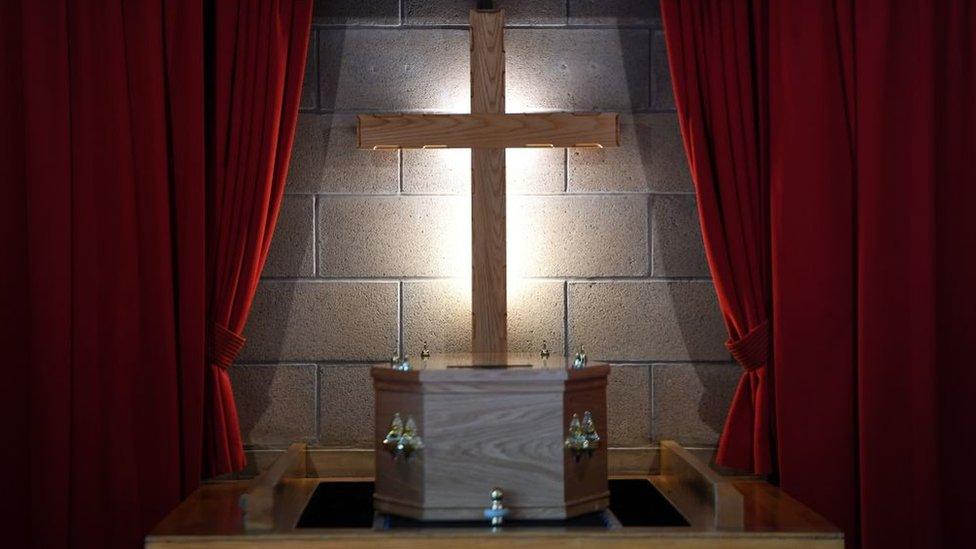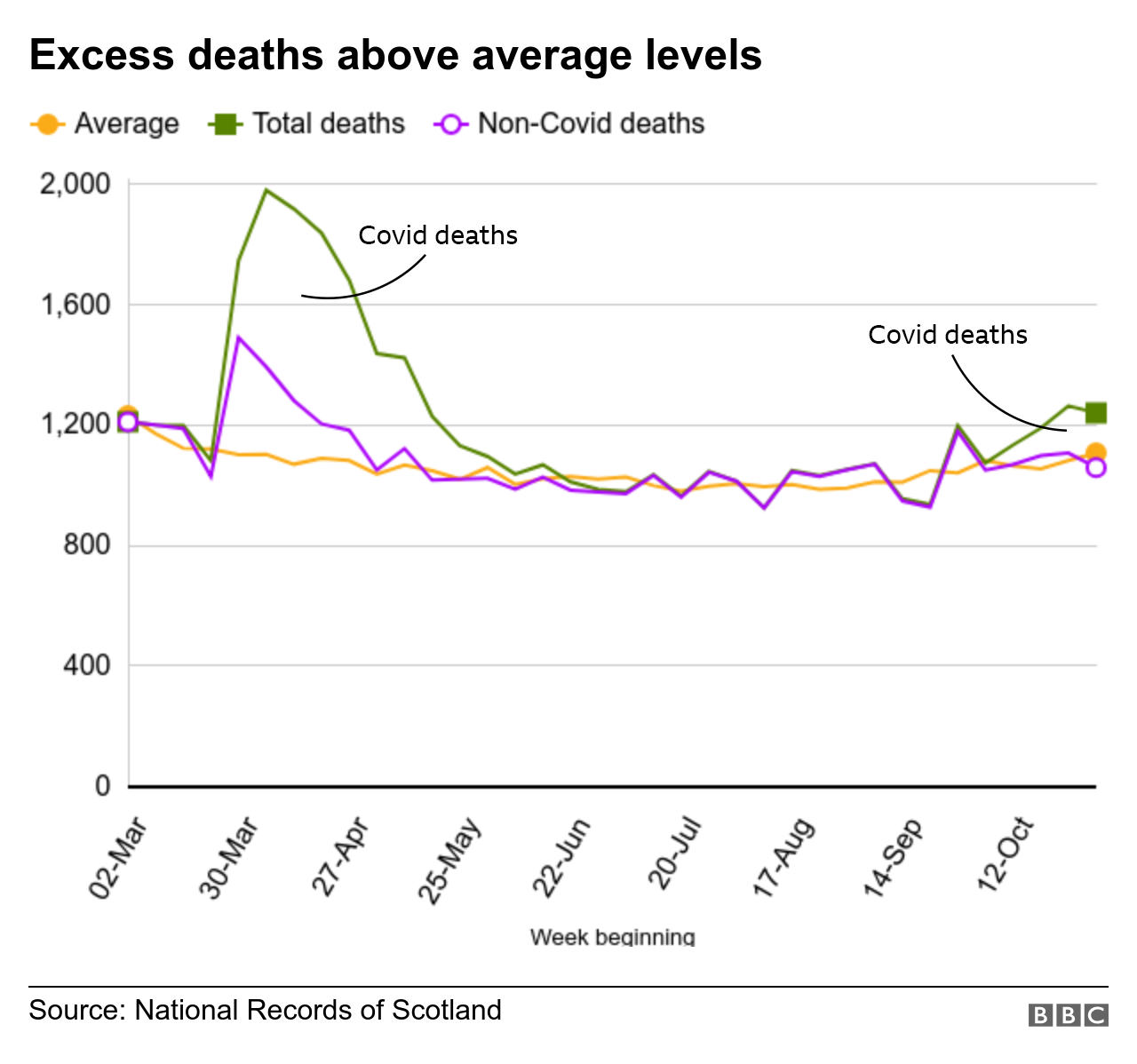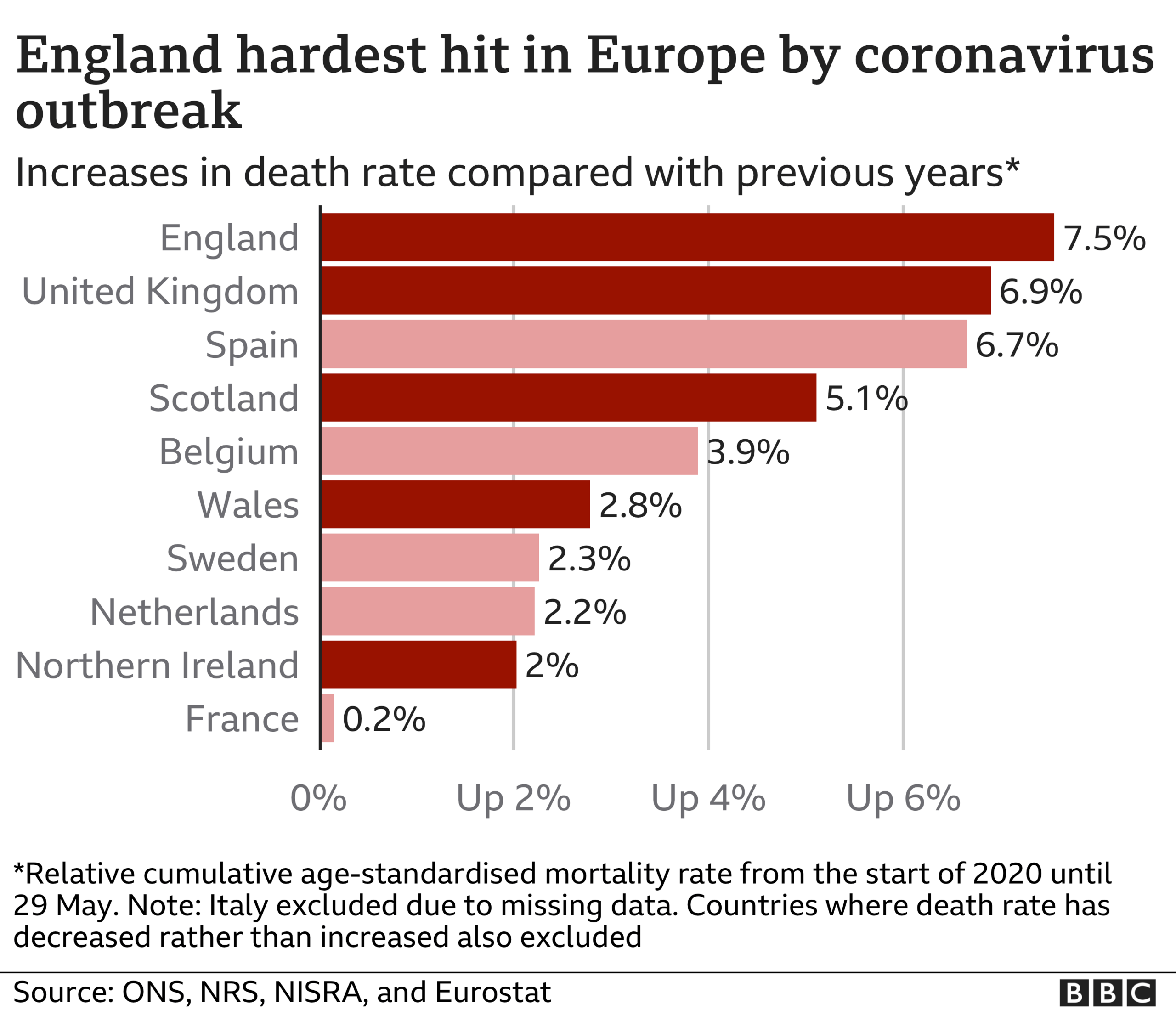Covid: How Scotland reached 5,000 deaths during the pandemic
- Published

The coffin of a Scottish care worker who died during the first wave of the pandemic
There have now been more than 5,000 deaths in Scotland linked to Covid-19, according to official figures.
The National Records of Scotland (NRS), which counts all death certificates which mention the virus, said 5,135 people had died as of 15 November, external, up from 4,857 the week before.
The sheer number of deaths is enough to underline the impact that the pandemic has had on Scotland, but what do we know of the complex picture behind this figure?
The deaths have come in two waves
In the spring, the number of deaths per week from Covid-19 accelerated very quickly.
Between 16-22 March there were 11 deaths. Just four weeks later, 650 deaths were recorded between 13-19 April.
Deaths peaked in the week beginning 20 April, when 661 Covid deaths were recorded.

The number of new deaths from Covid-19 stabilised over the summer, but the weekly totals began to rise again in September.
In the first week of September, there were just two deaths using the NRS measure - last week there were 278 and there is no sign yet of the rate beginning to decrease.

Excess deaths from all causes are high
There are two main ways of counting deaths from Covid-19.
The Scottish government releases daily figures of those who died following a positive test, and the NRS counts death certificates mentioning Covid-19 - even if the person has not been tested for the virus.
But the NRS also publishes monthly figures on excess deaths from all causes, compared with a five-year average.
As of 15 November, there had been 5,738 more deaths than would be expected since the start of the outbreak in Scotland, when measured against this average.

Some of the non-Covid excess deaths in the early days of the outbreak could actually have been caused by the virus, but the link was perhaps missed because there were lower levels of testing and less knowledge about the disease.
Others can be seen as indirect deaths - for example deaths from other conditions when people could not access the treatment they needed.
Most deaths have been among older people
More than three-quarters all deaths involving Covid-19 up until 8 November were of people aged 75 or over.
The virus has caused the death of 34 people under 45, but there have been 447 deaths among those aged between 45 and 64.
No-one under 15 years old has died from Covid-19 in Scotland, according to the NRS.

The worst-hit areas are in the west of Scotland
Looking at the death rates per 100,000 people across each local authority in Scotland, eight out of the top 10 are in western Scotland.
The highest death rate in the country has been in West Dunbartonshire, with 159 deaths per 100,000, followed by Inverclyde with a rate of 157.
The lowest rate is in the Western Isles which as of 8 November had only seen one death from Covid-19.

How does Scotland compare with other nations?
Comparisons between nations are difficult to do because of the different demographic make-up.
The ONS looked at this issue back in July using the excess deaths measure.

The comparison suggested England had been the hardest hit in Europe, with Scotland ranked third, behind Spain.
How this will be reflected in the second wave is not yet clear.
How will 2020 look in context?
There have been 54,510 deaths from all causes in Scotland in 2020 so far and there are likely to be another 8,000 deaths or so before the end of the year, judging from averages over the last five years.
If Scotland reaches almost 63,000 deaths this year, it will be the highest overall death toll since 1993.
Adjusting for population changes, it will be the highest number of deaths per 100,000 people since 1999.


- Published18 November 2020

- Published13 January 2023
